+7 (708) 972 29 72
+7 (727) 241 1973


 Search
Search
-
 Tire sizes
Tire sizes
Tire sizes
- 4x4
- Коммерческие авто
- Легковые авто
- Мотошины
-
14
195/80 R1415
235/75 R15 195/80 R15 12.5/33 R15 12.5/35 R15 265/70 R15 9.5/30 R15 11.5/32 R15 10.5/33 R15 10.5/31 R15 205/70 R15 215/75 R15 215/70 R15 225/70 R1516
235/65 R16 235/70 R16 235/60 R16 235/85 R16 285/75 R16 245/75 R16 245/70 R16 255/70 R16 265/75 R16 265/70 R16 305/70 R16 10.5/35 R16 275/70 R16 315/75 R16 205/65 R16 205/70 R16 205/80 R16 215/65 R16 215/70 R16 215/85 R16 225/75 R16 225/70 R1617
235/65 R17 235/60 R17 235/55 R17 285/65 R17 285/75 R17 285/70 R17 12.5/33 R17 12.5/35 R17 245/65 R17 245/75 R17 245/70 R17 255/65 R17 265/65 R17 265/70 R17 275/65 R17 275/70 R17 275/55 R17 295/70 R17 315/70 R17 13.5/35 R17 13.5/37 R17 215/65 R17 215/60 R17 225/65 R17 225/60 R1718
235/65 R18 235/60 R18 235/50 R18 235/55 R18 285/65 R18 285/60 R18 12.5/33 R18 12.5/35 R18 245/60 R18 245/40 R18 255/60 R18 255/55 R18 265/65 R18 265/70 R18 265/60 R18 265/35 R18 305/60 R18 275/65 R18 275/70 R18 275/60 R18 215/55 R18 225/60 R18 225/55 R1819
235/55 R19 235/45 R19 285/45 R19 245/50 R19 245/55 R19 245/45 R19 255/50 R19 255/55 R19 255/45 R19 265/55 R19 265/35 R19 275/50 R19 275/55 R19 275/40 R19 225/55 R1920
235/50 R20 235/55 R20 285/50 R20 285/55 R20 285/45 R20 12.5/33 R20 12.5/35 R20 245/50 R20 245/45 R20 255/60 R20 255/50 R20 255/55 R20 255/45 R20 265/60 R20 265/50 R20 265/55 R20 265/45 R20 305/60 R20 305/55 R20 305/40 R20 275/65 R20 275/60 R20 275/50 R20 275/55 R20 275/45 R20 275/40 R20 275/35 R20 295/40 R20 315/35 R20 -
14
195/65 R14 195/70 R14 175/65 R14 175/70 R14 185/65 R14 185/70 R14 185/60 R14 165/70 R14 155/65 R14 205/70 R1415
195/65 R15 195/60 R15 195/50 R15 195/55 R15 175/65 R15 185/65 R15 185/60 R15 185/55 R15 165/65 R15 165/60 R15 205/65 R15 205/70 R15 205/60 R15 205/55 R15 215/65 R15 225/70 R1516
235/70 R16 235/60 R16 195/75 R16 195/60 R16 195/50 R16 195/55 R16 195/45 R16 185/55 R16 205/65 R16 205/60 R16 205/50 R16 205/55 R16 215/65 R16 215/70 R16 215/60 R16 215/55 R16 225/70 R16 225/60 R16 225/50 R16 225/55 R1617
235/65 R17 235/50 R17 235/55 R17 235/45 R17 245/45 R17 245/40 R17 255/65 R17 265/65 R17 275/65 R17 205/50 R17 205/55 R17 205/40 R17 215/65 R17 215/60 R17 215/50 R17 215/55 R17 215/45 R17 215/40 R17 225/65 R17 225/60 R17 225/50 R17 225/55 R17 225/45 R1718
235/65 R18 235/60 R18 235/50 R18 235/55 R18 235/45 R18 235/40 R18 285/60 R18 245/60 R18 245/50 R18 245/45 R18 245/40 R18 255/60 R18 255/55 R18 255/45 R18 255/40 R18 255/35 R18 265/65 R18 265/60 R18 275/40 R18 275/35 R18 215/55 R18 225/60 R18 225/50 R18 225/55 R18 225/45 R18 225/40 R1819
235/65 R19 235/60 R19 235/50 R19 235/55 R19 235/45 R19 235/40 R19 235/35 R19 285/45 R19 285/40 R19 285/35 R19 285/30 R19 245/55 R19 245/45 R19 245/40 R19 255/50 R19 255/55 R19 255/45 R19 255/40 R19 255/35 R19 265/50 R19 265/55 R19 265/35 R19 275/40 R19 275/35 R19 275/30 R19 295/40 R19 225/55 R19 225/45 R19 225/40 R1920
235/60 R20 235/50 R20 235/55 R20 235/35 R20 285/50 R20 285/45 R20 285/40 R20 245/50 R20 245/45 R20 245/40 R20 245/35 R20 255/50 R20 255/55 R20 255/45 R20 255/40 R20 255/35 R20 265/55 R20 265/35 R20 305/40 R20 305/30 R20 275/60 R20 275/50 R20 275/55 R20 275/45 R20 275/40 R20 275/35 R20 275/30 R20 295/45 R20 295/40 R20 295/35 R20 295/30 R20 315/35 R2021
235/45 R21 285/45 R21 285/40 R21 285/30 R21 245/35 R21 255/40 R21 255/35 R21 265/45 R21 265/40 R21 265/35 R21 265/30 R21 305/30 R21 305/25 R21 275/50 R21 275/45 R21 275/40 R21 275/35 R21 295/40 R21 295/35 R21 295/30 R21 325/30 R21 325/25 R21 315/40 R21 315/35 R21 315/30 R2122
285/45 R22 285/40 R22 285/35 R22 265/40 R22 275/40 R22 295/40 R22 295/35 R22 295/30 R22 325/35 R22 315/30 R22 335/25 R2224
295/35 R24
-
 Comparison
0
Comparison
0
-
 Favorites
0
Favorites
0
-
 Profile
Profile
Vi Bilägare: summer tyre test 205/55 R16 (2022)
14.13.2022
List of tires tested:
Bridgestone Turanza T005
Michelin e.Primacy
Climate changes caused requirements strengthening for cars. The regularly updated regulatory framework requires manufacturers to make cars environmentally friendly. Entrepreneurs have realized that the cheapest and most effective way to reduce carbon emissions into the atmosphere is to use tires with low rolling resistance. Tire manufacturers have met the needs of their customers, as a result of which a segment of “green tires” has been formed on the market, which is actively developing in recent years. Now the trend to produce wheels that meet eco-standards has become one of the key in the development of the industry.
Tire characteristics are in conflict with each other, for example, a decrease in rolling resistance impairs braking performance. And this is a key condition for safe travel.
Test results
Testing tires of different brands made it possible to identify the leaders: Nokian HB3 tires showed the best grip in the test of wet handling. Continental PC6 and Bridgestone tires give you the ability to quickly change the direction. The “green” Continental tires have a traction problem on the rear axle, which smooth the way for skidding when braking.
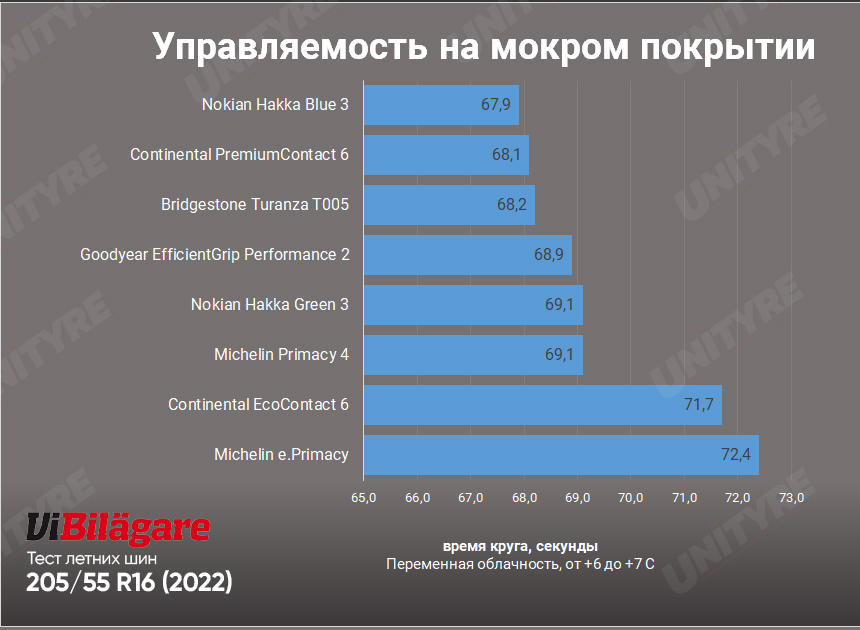
The highest braking quality on wet roads was shown by conventional Nokian and Continental tires. Eco-friendly tires have all shown problems without exception, which is predictable.
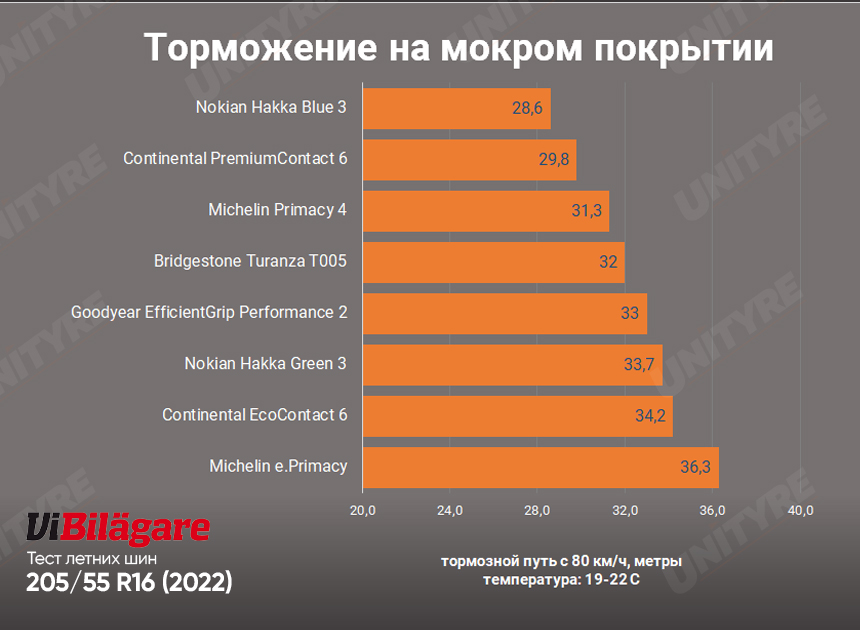
Performance testing was carried out on a circular track, the surface of which was covered with water, the thickness of the water layer was 1 millimeter. The safest were Continental and Nokian. Bridgestone was also up to the mark in demonstrating lateral grip. Michelin eco-tires have shown poor performance. And with Continental EC6 wheels, you could be in a skid situation.
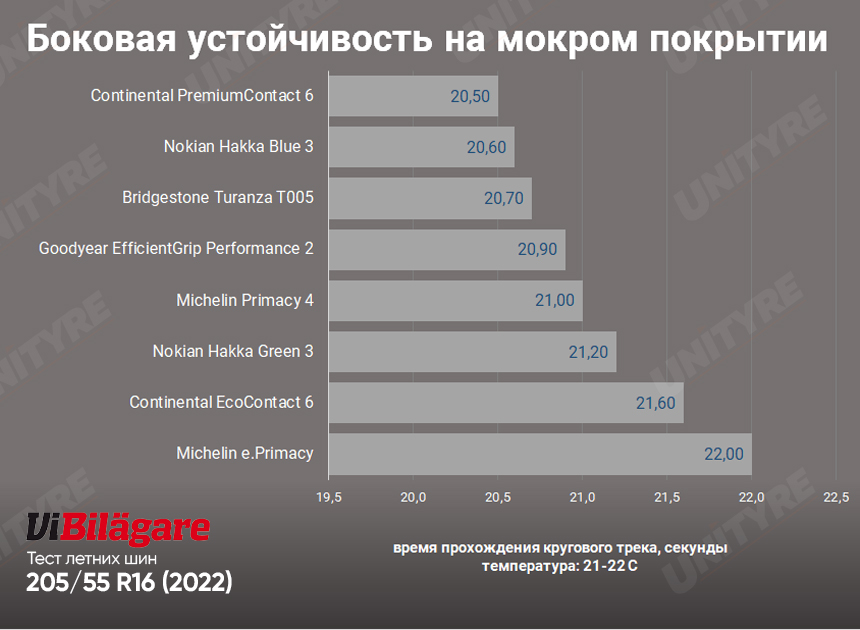
Interesting results were shown by the test for longitudinal aquaplaning and resistance to it. In first and last place were tires of Michelin brand. The e.Primacy model is unable to hold traction and loses it almost instantly. And the Primacy 4 model is fine with this indicator, this kit was significantly ahead of its closest competitor.
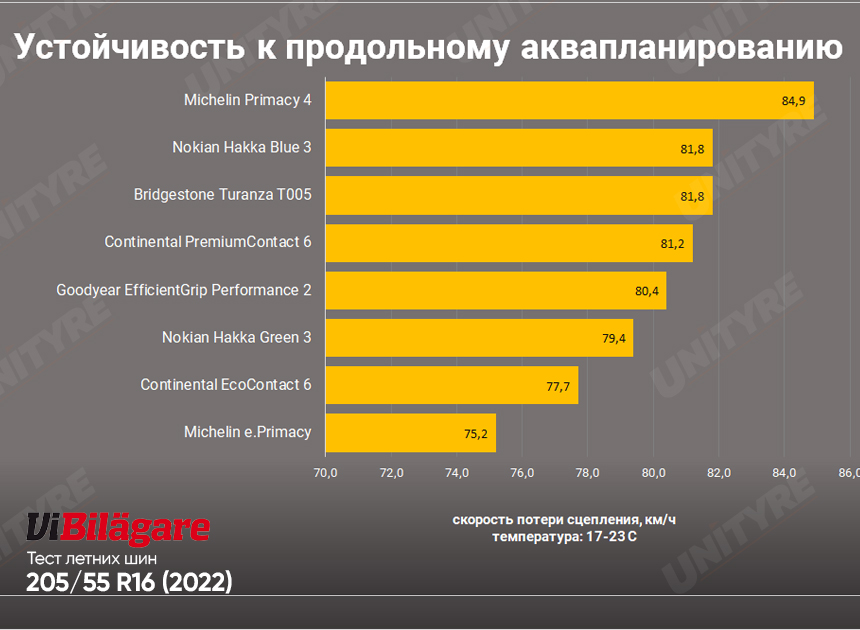
Eco-tires of the Continental and Michelin brands are the least resistant to longitudinal aquaplaning: traction is lost at speeds up to 78 km/h. Michelin P4, Bridgestone, Nokian were at the top: the grip is good at the speed up to 80 kilometers per hour.
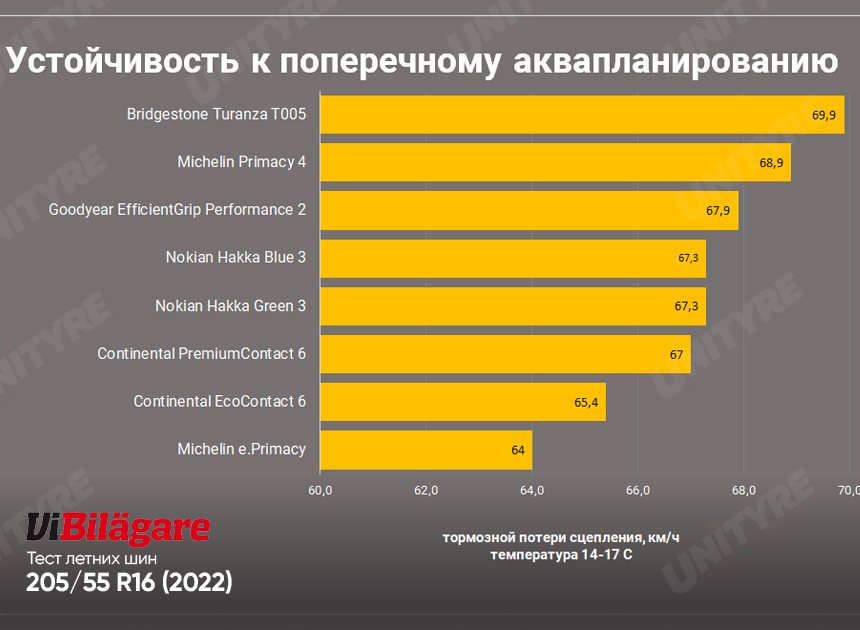
The other scenario was in the dry handling test, where the Continental CP6 tires took the lead. Bridgestone instantly responds to all driver’s maneuvers. Synchronous stability of both Michelin tires allowed the car to behave predictably. Goodyear made it possible to complete the lap in the shortest possible time, but the accuracy of the steering response left much to be desired. All this caused stability problems during emergency maneuvers. The Brake Loss of Grip score is an aggregate metric that takes into account lap times and drivers feedback based on subjective sensations.
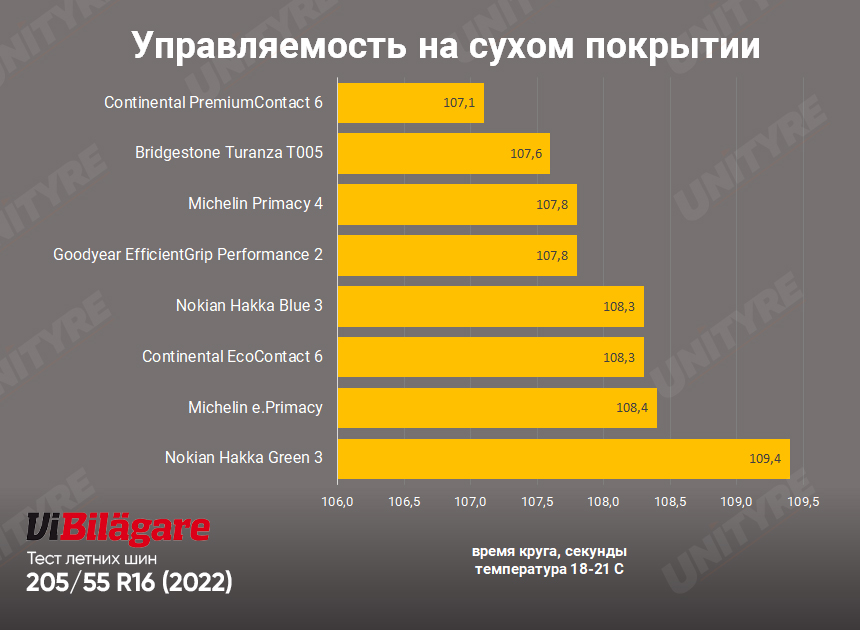
On a dry section of the road, the braking distances of the tires were almost the same: from a speed of 100 km/h to a complete stop, it took 34.2 to 37.9 seconds. But the Continental CP6 still has been identified as the leader. Goodyear and Continental EC6 earned an average score. "Green" tires Nokian closed the rating, being among the lagging behind.
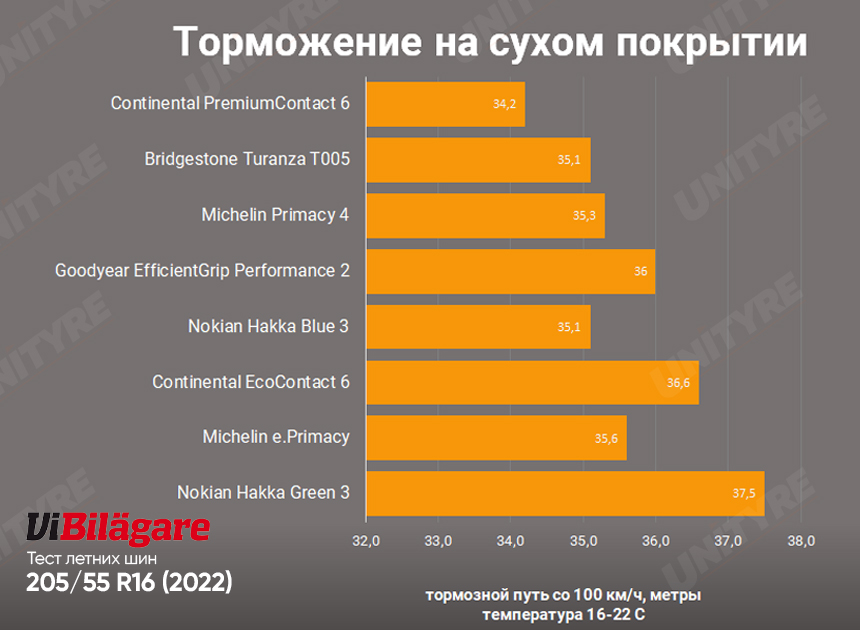
The "fuel consumption" parameter was measured at a constant speed during the test on an oval-shaped track. "Green tires" in this class are the most efficient by this indicator, which could be expected. The Nokian Hakka Green 3 eco-tire model was in fourth place among the leaders. It was surprising, that the standard Goodyear took third place, beating the Nokian.
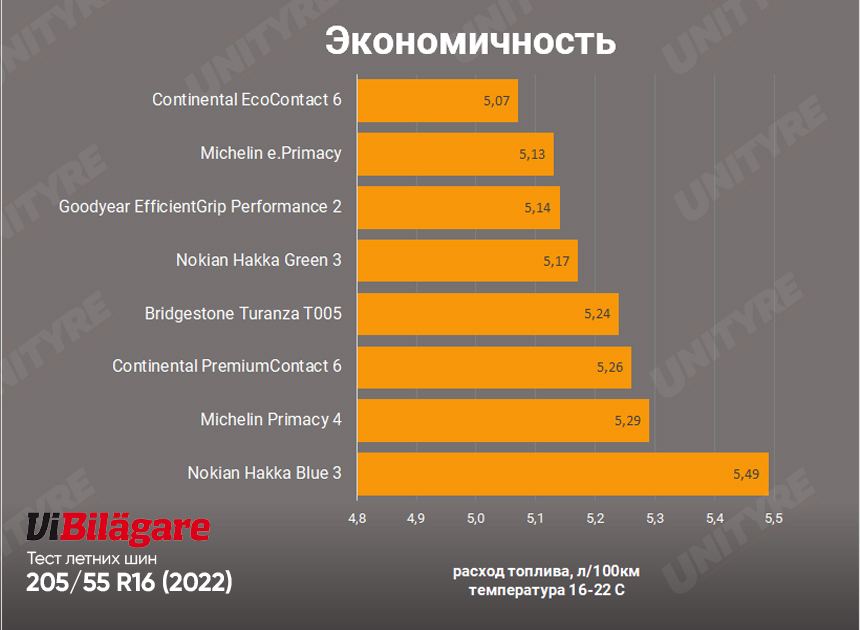
The title of the quietest tire went to Nokian HG3, the same model provides maximum comfort when driving on uneven road surfaces. Low noise is emitted by ordinary Nokian; Goodyear is also quiet, but does a great job of absorbing vibrations when crossing joints and other irregularities on the road surface. Rolling resistance tests were carried out on the bench, the tires were equalized by the depth of grooves, for which the Goodyear and Michelin e.Primacy had the tread cut to 6.1 mm. This brought them closer in terms of performance to Nokian and Continental eco-tires.
Testing results
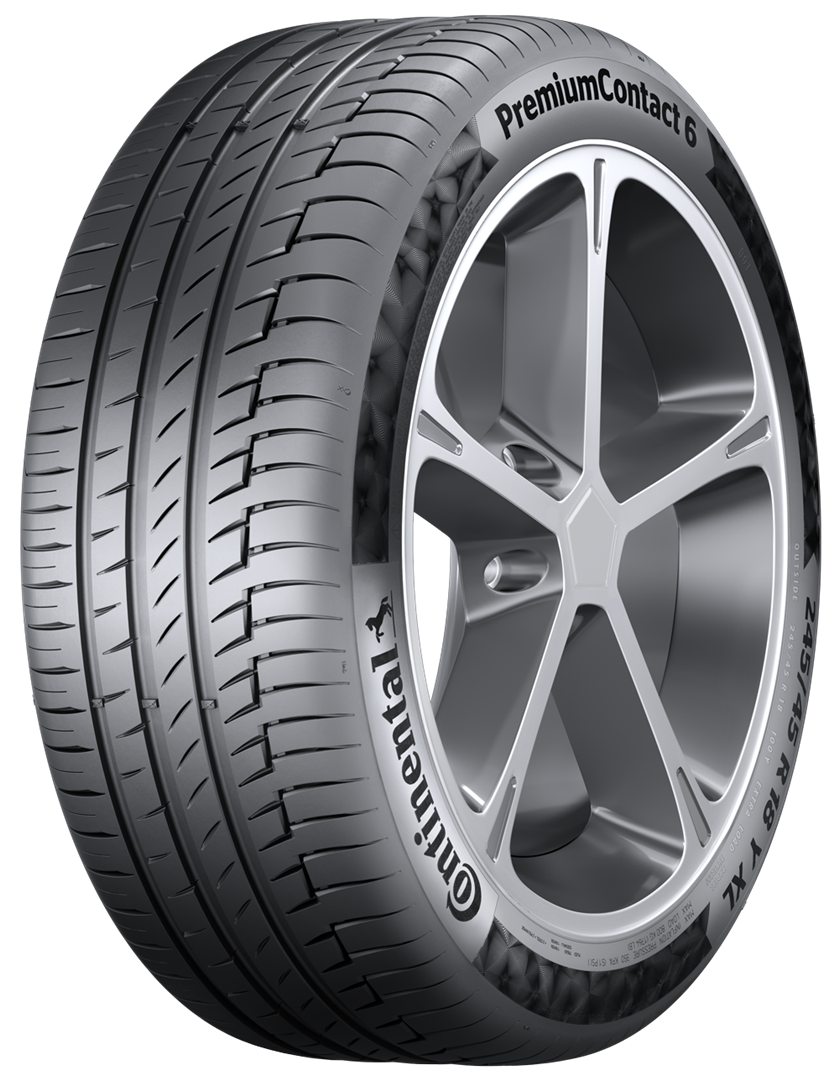
CONTINENTAL PREMIUMCONTACT 6
The Continental PremiumContact 6 tires turned out to be the best by the aggregate set of characteristics according to the test results. They perfectly brake both on dry and wet road surfaces, quickly and accurately respond to maneuvers and changes in the position of the steering wheel in different conditions. In extreme situations, tires retain control without losing comfort. But the model turned out to be noisy, providing a hard ride. These shortcomings are relatively weak compared to other models, and do not create inconvenience to the driver and passengers.
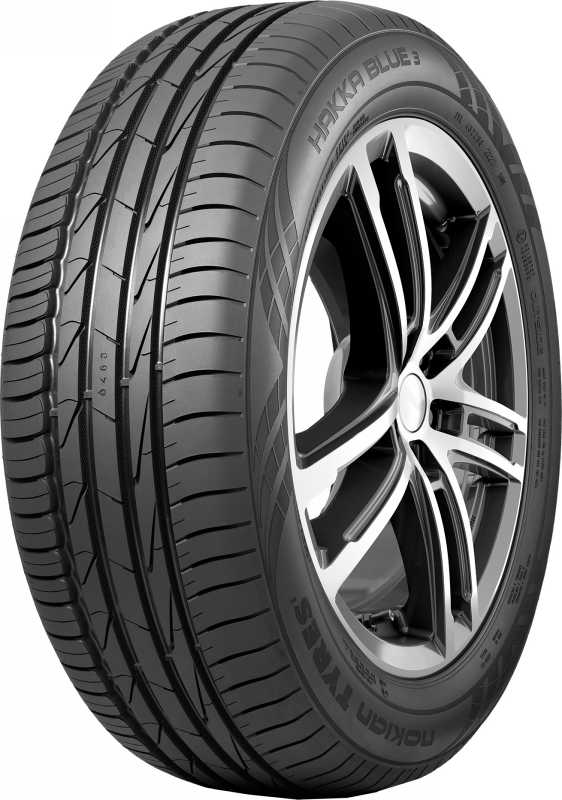
NOKIAN HAKKA BLUE 3
The Nokian Hakka Blue 3 won silver. Compared to the second-generation model, it showed an improved balance between dry and wet performance. Manufacturers have clearly worked on improving the quality of grip on dry surfaces and on stability. On the track, covered with water, the tires also proved to be excellent: their braking distance was the shortest. They demonstrated good handling, the grip on the rear axle was stable, including in corners, which were passed at high speed. The second place went to these tires due to the loss in the hydroplaning resistance parameter, they also provided increased rolling resistance.
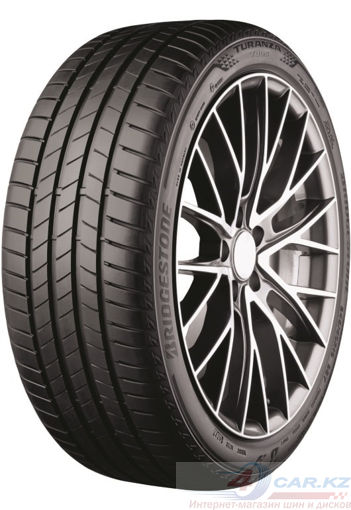
Bridgestone Turanza T005
The third place rightfully went to the Bridgestone Turanza T005, which combined low fuel consumption and a high degree of controllability. The pilots appreciated the possibility of a sharp detour of obstacles without skidding and excessive turns. Fast turning of the steering wheel does not disturb the stability of the grip on the rear axle. Bridgestone tires allow you to brake hard without risking the driver, have increased stability on dry roads at high speeds. However, even on a wet track, they turned out to be one of the best in many respects. Disadvantages are also present, of course. They are associated with a reduced level of comfort: there is noise on uneven surfaces, emitted at a low frequency. The model passes through the joints of the pavement quite rigidly, vibrations are felt when hitting them.
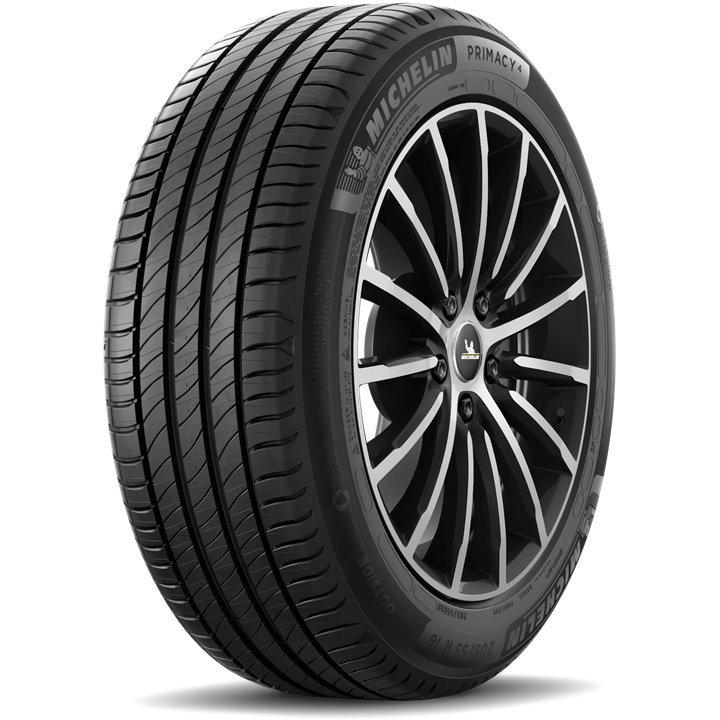
Michelin Primacy 4
Next up are the Michelin Primacy 4s, which are predictable in all conditions, respond quickly to steering and provide good stability. In addition, Michelins maintain logical handling at the limit of grip and handle emergency maneuvers well, and they also have very high resistance to aquaplaning.








